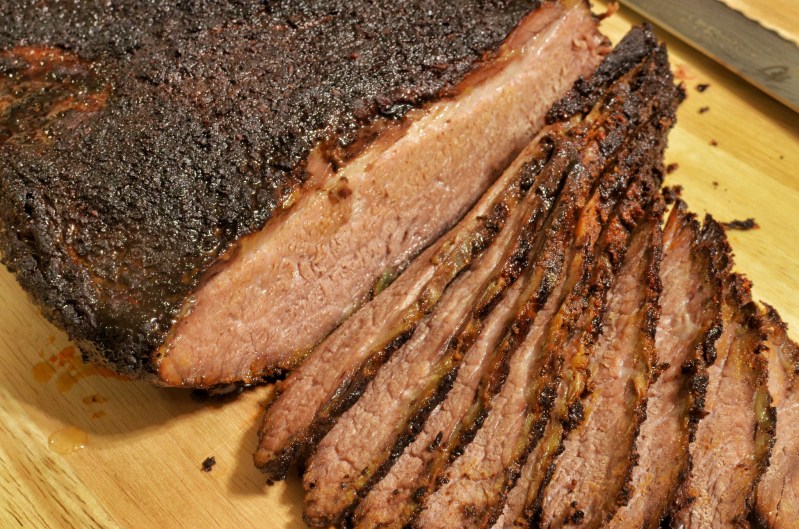
There are not many foods more heartily satisfying than slow-cooked meat. One of the best versions of this comfort food is brisket. With an awesome blend of meat and fat, beef brisket is that melt-in-your-mouth flavor at its finest. Because it’s so substantial, brisket is great for celebrations and social gatherings.
Brisket also lends itself to a wide range of cooking methods, which can be intimidating, especially when handling a whole brisket. But when done right, brisket is a showstopper, guaranteed to be the highlight of any meal.
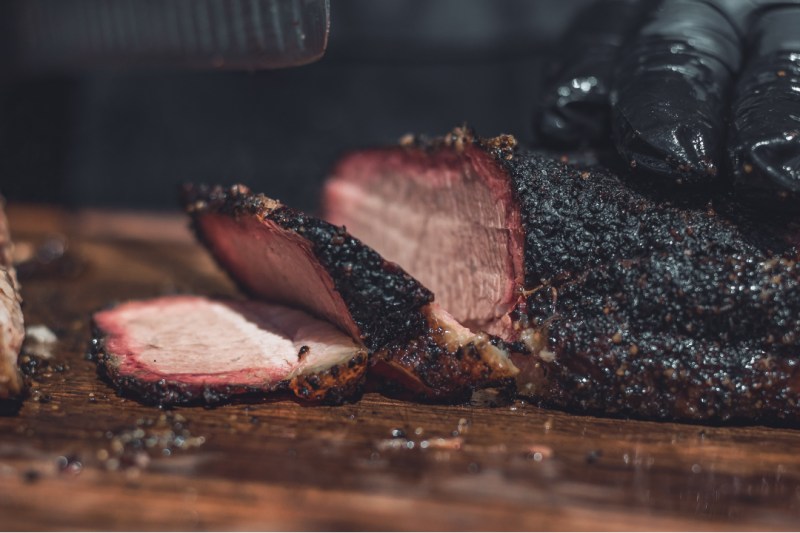
Selecting the brisket
Traditionally a cheap cut due to its toughness, brisket is butchered from the chest area of the cow. In order for brisket to become tender, it requires long hours of cooking at low heat. In recent decades, brisket has grown in popularity, making the cut more expensive.
There are two main parts of the brisket — the flat cut and the point cut. The flat cut (the larger portion of the brisket) has a long and thin shape. This area of the brisket is lean and excellent for slicing. Generally, this is the cut that’s most commonly available at most supermarkets. In comparison, the point cut is smaller, thicker, and marbled with fat. The fat of the point cut makes this section more flavorful. However, this also means there’s less meat. To obtain a point cut or a whole brisket containing both, seek out your local butcher shop or order it online.

How to cook the brisket
Brisket is best cooked low and slow. Although this is a time-consuming process, the results are worth the effort. The good news is that within the slow-cooking realm, there’s a diverse range of methods and culinary styles.
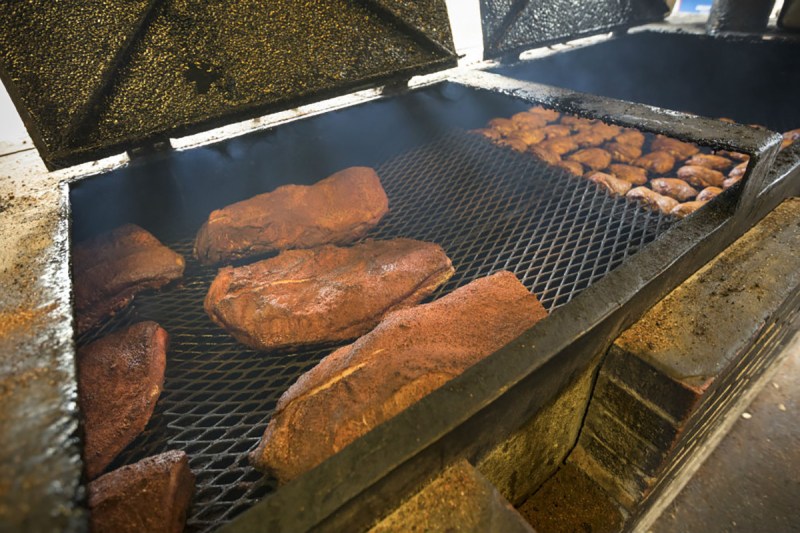
Barbecue
A barbecue favorite, brisket is fantastic when smoked. In Texas-style barbecue. brisket seasoning is generally only salt and pepper. But that’s only the beginning — get creative and experiment with different spices. For a spicy kick, add smoked pepper powder to your brisket rub.
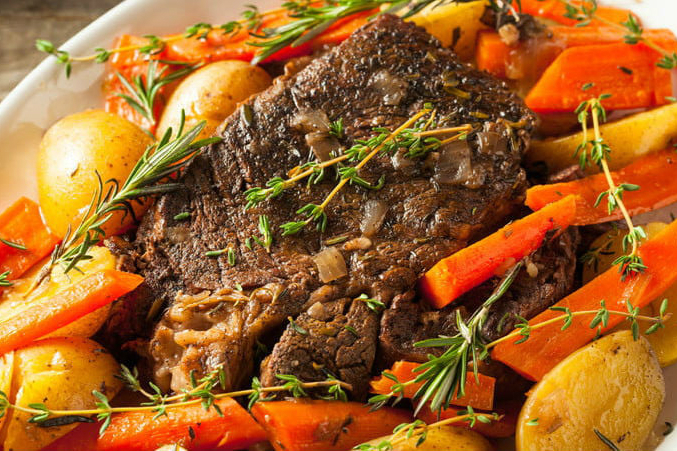
Oven roasting
Another great way to cook brisket is to roast it in the oven with a flavorful stock and aromatics (garlic, onions, carrots). You can also recreate elements of barbecued brisket in the oven. Although you won’t get the smoke ring and flavor of traditional barbecue, you can season your brisket with similar ingredients and roast it wrapped in foil (this will keep the brisket moist). Then, uncover the brisket and cook it slathered with your favorite barbecue sauce to achieve a pleasing caramelized glaze.
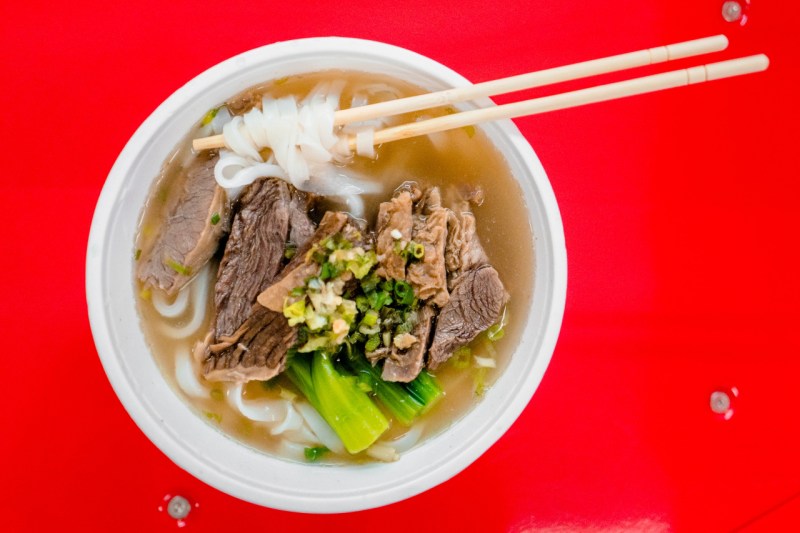
Braising and stewing
Besides slow-cooking in the oven, braising or stewing brisket on the stovetop is also delicious. For a braised brisket, cook in a flavorful stock rich with herbs, beer, or wine. Keep in mind that as red meat, brisket goes best with red wine (amber and dark ale also works). For a Chinese-style brisket. try stewing brisket (along with beef tendon) with soy sauce, sugar, ginger, and spices like star anise. This Chinese brisket stew is great on rice or noodles.
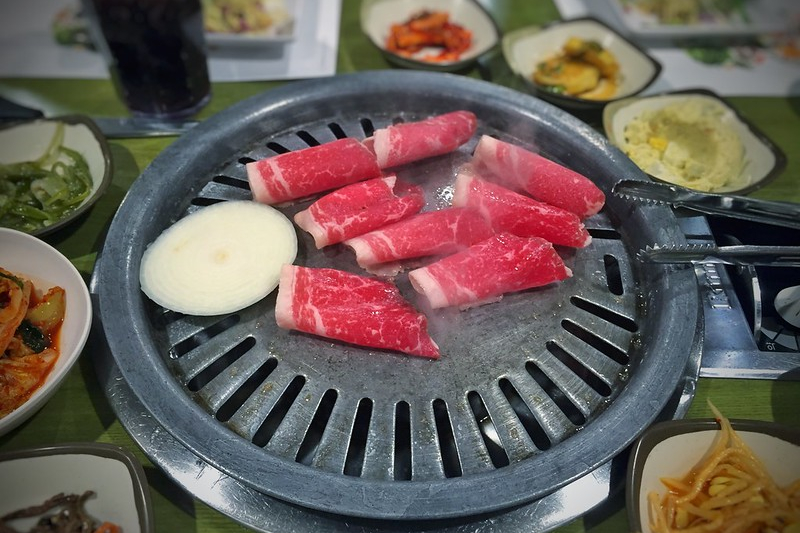
Grilling
Surprisingly, brisket can also be grilled or stir-fried. But how do you make brisket tender without slow-cooking? The key is to slice the brisket extremely thin. To slice brisket thinly, freeze the meat before slicing. This thin cut of brisket is very popular in Korean barbecue. The point cut of brisket is great for this method because of its well-marbled fat. Thinly sliced brisket is great for stir-fries, adding a beefy flavor. The fat will also become crispy, creating a bacon-like effect. If grilling thinly sliced brisket on a traditional American grill, place the meat in a grill basket to avoid it falling into the coals.

Brisket recipe
Smoked beef brisket hash
(By Chef Lamar Moore, formerly of Eleven Eleven in Chicago — now closed)
A graduate of Le Cordon Bleu, Chef Lamar Moore is a restaurateur and chef from Chicago. Moore is a seasoned food television professional, having appeared on Food Network’s Chopped, Welcome to Waverly, and was the winner of Food Network’s “Vegas Chef Prizefight.”
Ingredients
- 2 tablespoons olive oil
- 1/2 pound Yukon gold potatoes
- 1 jalapeño pepper, diced
- 1 avocado, sliced
- 1 medium yellow onion
- 3 small tomatoes, diced
- 2-3 cloves garlic, crushed
- 1 teaspoon ground cumin
- 1 pinch crushed red pepper flakes
- 1 cup smoked beef brisket, cubed (see recipe below)
- Salt and pepper to taste
- 1 teaspoon honey
- 2 cilantro sprigs
- 1 teaspoon chipotle adobo, chopped
- 1/2 cup chicken stock
- 1 tablespoon cold unsalted butter
Method
- Heat olive oil in a large skillet.
- Dice Yukon gold potatoes into half-inch-thick pieces. Add to skillet and saute for about 5 minutes.
- Chop remaining vegetables and add to skillet. Add in cumin and red pepper flakes. Saute for another until the vegetables caramelize (about 10 minutes). Cook for another 5 minutes or so until the potatoes are soft.
- Add brisket, honey, chicken stock, and chipotle. Cook another 5 minutes until all the ingredients are heated through.
- Add in cold butter, salt, and pepper to taste. Serve topped with sunny-side-up eggs, sliced avocado, and cilantro sprigs.
For smoked beef brisket
Ingredients
- 1 whole beef brisket (12 to 13 pounds)
- 1/4 cup granulated garlic
- 1/4 cup sweet paprika
- 1/4 cup cracked black pepper
- 2 tablespoons kosher salt
Method
- Add wood chunks, chips, pellets, or charcoal to the smoker according to the manufacturer’s instructions. Preheat the smoker to 225 degrees Fahrenheit.
- Combine garlic, paprika, pepper, and salt in a small bowl. Sprinkle and press evenly into beef brisket on all sides and edges. Cook’s tip: a whole brisket may require some fat trimming to ensure rub makes contact with the brisket. You may also substitute brisket flat or point for the whole brisket.
- Insert an oven-proof meat thermometer so the tip is centered in the thickest part of the brisket, not resting in fat. Place brisket on rack in smoker according to manufacturer’s instructions. Set the timer for 12 hours, depending on the desired smoke flavor. Cook’s Tip: After 3 hours, you may carefully remove the brisket, wrap it in foil along with a little liquid, such as water, juice, or beer, and then return it to the smoker for the remaining cook time. This is called the “Texas Crutch.”
- Carefully remove the brisket from the smoker after 10-1/2 to 11 hours or when the temperature reaches 195 degrees for the brisket to slice easily. For brisket that can be shredded or chunked, carefully remove it from the smoker at 12 hours or when the temperature reaches 205 degrees. Cook’s Tip: The badge of honor, the moneymaker, the holy grail — is a pink layer near the meat’s surface, caused by a chemical reaction to wood smoke, is a can’t-miss sign of great barbecue.
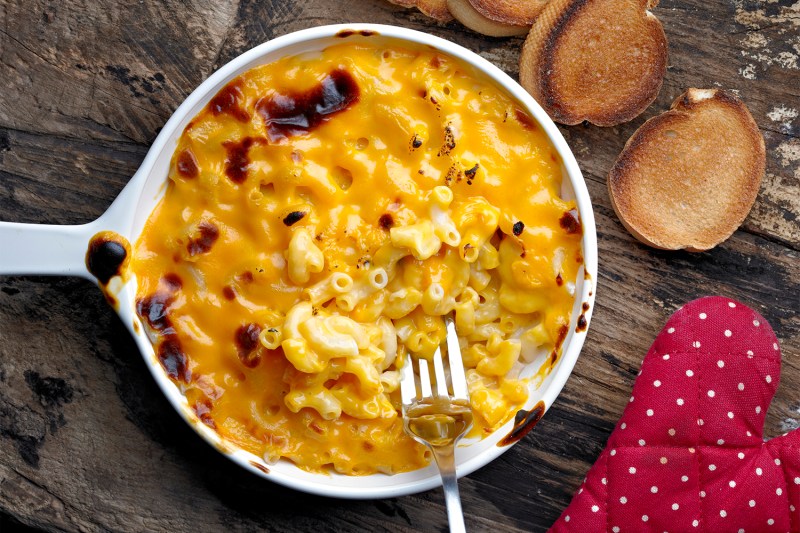
Side dishes to pair with brisket
Brisket is a delicious and hearty dish that you can enjoy in many ways. But what are the best side dishes to go with it? Here are a few ideas for you.
- Coleslaw is a classic pairing for brisket, as it provides a refreshing contrast to the rich meat.
- Creamy mac and cheese is always a crowd-pleaser side dish.
- Sweet and savory baked beans are a great way to complement the smoky flavor of brisket.
- Roasting vegetables is a simple and healthy way to cook veggies and they pair well with your brisket. You can try roasting a mix of vegetables, such as potatoes, carrots, onions, and broccoli.
- Green beans are a light and healthy side dish that’s easy to digest. You can steam, boil, or saute them.
- Mashed potatoes are a classic comfort food that pairs well with brisket. You can make them with or without cheese and sour cream.
- Cornbread is a delicious side that’s also perfect for soaking up the juices from the brisket.



